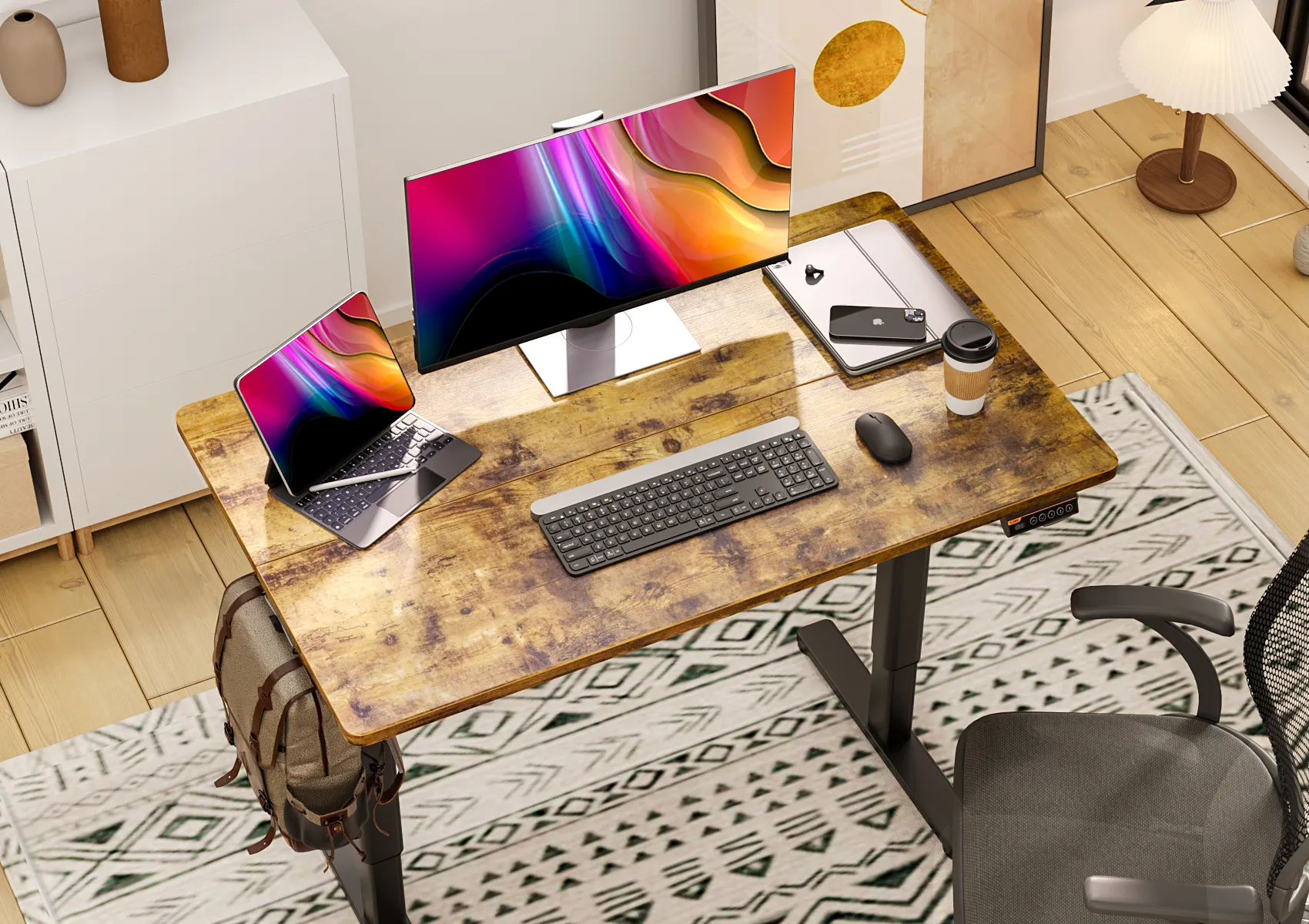A height-adjustable standing desk can make a real difference in how you work and feel each day. Instead of being stuck sitting for hours, you can easily switch between sitting and standing positions to stay comfortable and focused. These desks have become popular for good reasons - they help maintain better posture, keep you active, and adapt to how you prefer to work. But with so many options available, finding the right desk really matters.
Which Adjustment Mechanism Should I Choose for a Height-Adjustable Standing Desk?
The adjustment mechanism is crucial since it determines how easily you'll switch positions. Here's a comparison of your options:
| Feature | Manual Hand Crank | Electric Motors | Pneumatic System |
| Price Range | $200-400 | $400-1,000+ | $500-800 |
| Adjustment Time | 30-40 turns (1-2 min) | 10-15 seconds | 3-5 seconds |
| Weight Capacity | 200-250 pounds | 250-350 pounds | 150-200 pounds |
| Typical Warranty | 2-5 years | 5-10 years | 3-5 years |
| Power Source | Manual effort | Electrical outlet | Gas springs |
| Noise Level | Low | Moderate | Silent |
| Best For | Budget buyers, areas without power | Daily adjustments, multiple users | Quiet offices, light setups |
Your daily needs and work environment will point you to the right mechanism. The best choice balances your budget with the convenience you need.

What Height Range Do I Need for a Height-Adjustable Standing Desk?
The right height range ensures your desk works well for both sitting and standing. A proper height setting keeps your body in good posture and helps prevent strain.
For Sitting Position: 22-28 inches
Your desk should lower enough for comfortable sitting. Most people work best with a desk height between 22 to 28 inches from the floor. At this height, your forearms stay parallel to the ground while typing, and your feet rest flat on the floor. The right sitting height reduces strain on your shoulders and wrists.
For Standing Position: 40-46 inches
When standing, most people need their desk between 40 to 46 inches high. This height keeps your arms at a natural 90-degree angle and prevents hunching. A good standing height lets you work longer without feeling tired or uncomfortable.
How to Find Your Perfect Height:
- Sit in your chair and measure from the floor to your elbow - this is your sitting height
- Stand and measure from floor to elbow - this is your standing height
- Look for a desk that adjusts at least one inch above and below these measurements
Most desks offer a range of 22 to 50 inches, suitable for people between 5'0" and 6'3". If you're taller or shorter, check for desks with extended ranges. The right height range is key to a comfortable and healthy work setup.
How Much Weight Should My Standing Desk Support?
The weight capacity of your standing desk affects both its stability and long-term performance. A desk that's properly rated for your equipment stays steady and works reliably.
Standard Weight Capacity
Most quality standing desks support between 200 to 350 pounds. This capacity needs to handle everything you put on the desk while maintaining stability at any height. Keep in mind that lifting power slightly decreases when the desk is fully raised.
What to Include in Your Weight Calculation:
- Desktop itself (15-30 pounds for laminate, 30-60 pounds for solid wood)
- Computer monitors (5-20 pounds each with mounts)
- Desktop or laptop computer (5-30 pounds)
- Basic office items (books, files, accessories: 10-20 pounds)
- Any storage solutions or desk-mounted items
Features for Desk Stability
A stable desk should have a sturdy base design. Two-leg desks work well for surfaces up to 48 inches wide. Wider desks might need a three-leg up to 63 inch design for extra support. Look for adjustable feet to level your desk on uneven floors.
The desk should stay steady during use with:
- No wobble at full height
- Smooth movement when adjusting
- Quiet operation without rattling
- Solid feel during typing or writing
Choose a desk rated for at least 50 pounds more than your total equipment weight. This extra capacity helps ensure stable performance and gives you room to add items later.
What Ergonomic Features Make a Height-Adjustable Standing Desk Comfortable?
The ergonomic design of your standing desk directly affects your daily comfort and health.
Adjustable Work Surface
A good ergonomic desk needs the right dimensions for comfortable work. The depth should be 28-30 inches, providing ideal screen distance and arm support. Rounded or gently curved edges prevent pressure points on your wrists and forearms. The width should give you enough space to arrange your work materials naturally.
Height Memory Settings
Programmable height positions make desk adjustments more convenient. Memory settings let you save your ideal sitting and standing heights. One-touch adjustments encourage more position changes throughout the day. Some desks include reminders to switch positions, helping you maintain healthy movement patterns.
Anti-Collision Protection
Safety features protect both you and your equipment. Anti-collision systems stop the desk if it meets an obstacle while moving. Smooth start/stop movements prevent sudden jerks. Child-lock options prevent accidental activation of controls.


